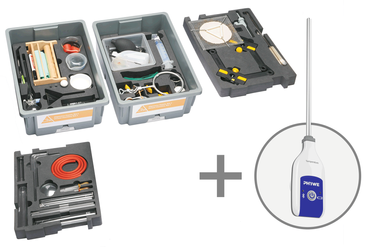This student experiment is investigating how and why a candle burns. This experiment explains clearly which processes occur during burning a candle. Many students know that wax is a relatively soft and malleable material (often consists of stearin or paraffin). But perhaps they are not aware that in a candle flame the wax does not burn, but from the liquid wax riseses gases (above the wick) which burn. This observation can also be applied to other materials, it is the rising vapours that burn, not the substances themselves.
Learning objectives
- Combustion reaction
- Candle flame
Benefits
- Easy teaching and efficient learning by using interactive experimentation PHYWE-Software
- Experiment is part of a complete solution set with experiments for all Inorganic Chemistry matched with international curriculum: all topics are covered


